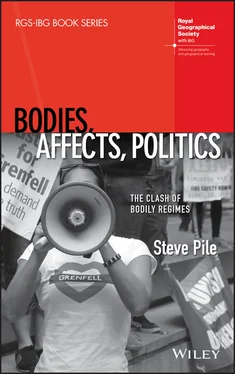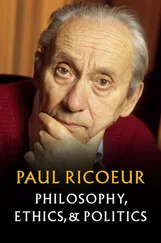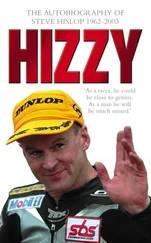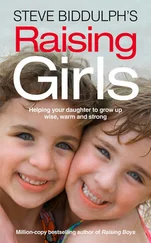Building on this observation, Rancière is now able to contrast the classical aesthetic regime with today’s dominant regime, the representational aesthetic regime. The pivotal difference between the representational and classical aesthetic regimes is the way they render the truth visible and invisible. Rancière argues that Freud selects the classical regime precisely because Oedipus cannot see his own truth, even when it is pointed out to him. This performs a particular cut through seeing and not seeing, the sayable and the unsayable, hearing and understanding, through knowing and not knowing. On one side, there is the knowing subject, Laius, who seems to be king of his own destiny; and, on the other side, there is a not‐knowing subject, Oedipus, who cannot even be king of who he is. It is the movement between these contradictory positions that animates the tragedy and what draws Freud to it. This is significant for Rancière.
And, for me, too. Rather than Oedipus being a lesson in what happens if you break the incest taboo (knowingly or not), this is about the relationship between knowing and not knowing, seeing and not seeing, hearing and not hearing (see Chapters 2and 3): that is, the relationship between conscious and unconscious thought processes (see Chapters 3and 4). And, as we see (in Chapters 5and 6), between a repressive unconscious and a communicative unconscious. In particular, the (classical or representational) aesthetic regime is connected to the ideas of overdetermination and indeterminacy, where overdetermination is about how meaning is determined many times over through the distribution of the senses (that creates ways of knowing, seeing, hearing, feeling and so on) and where indeterminacy is a product of the epistemic cut between knowing and not knowing, seeing and not seeing, hearing and not hearing, feeling and not feeling and so on. My approach to these issues is empirical. The relationship between bodies, affects and politics is not to be decided in the abstract or in advance, but in context.
Rancière also asks why Freud draws upon Oedipus at all. That is, why does Freud draw upon a fictitious character from a stage play to model psychic structures? This question can be usefully extended: why does Freud draw on Shakespeare’s Hamlet (immediately following his discussion of Oedipus in The Interpretation of Dreams ) or other artistic products, such as Michelangelo’s statue of Moses (Freud 1913), Leonardo da Vinci’s painting of The Virgin and Child with Saint Anne (Freud 1899), ‘The Sandman’ horror story by E.T.A. Hoffman (Freud 1919, which also establishes a connection between eyes and the fear of castration), and the like? For me, these examples perform two significant functions. First, these examples, for Freud, bear witness to unconscious processes through the aesthetic forms they take. Second, they reveal that unconscious processes bleed through life, in all its forms: that is, given the focus of this book, through bodies, through affects and through politics. Thus, as this book is to bear witness to the ‘aesthetic unconscious’ of bodies, affects and politics, I draw on a range of examples: I have selected Freud’s case studies ( Chapters 4, 5and 6), autobiography ( Chapters 2and 3), novels ( Chapter 2), Hollywood movies ( Chapter 5) and art ( Chapter 7). Importantly, for my argument, the unconscious is not confined to a particular space, such as the consulting room, and especially not to the brain or the mind of the individual.
The Oedipus myth is normally taken as significant because it places repression, sexual anxieties associated with parents and the body, at the heart of the analysis of the symptom. However, what Rancière highlights is the way Freud traces the slippages between knowing and not knowing, between hearing and not hearing, between seeing and not seeing. So, the imperative that this book follows, drawing on both Rancière and Freud, is two‐fold. First, to map out the coexistence of different distributions of the sensible and their policing – which I will call bodily regimes (following Frantz Fanon, see Chapter 2). Second, to chart the ways that these coexistent bodily regimes are imbricated and experienced, especially including the ways that these create tensions and antagonisms for the subject (building from Chapter 2to Chapter 3). In Chapters 2and 3, I lay particular emphasis on the role of skin as a target for, and a manifestation of, coexisting bodily regimes. These two chapters are an asymmetrical pairing, showing how people can, and cannot, inhabit the uncomfortable imposition of bodily regimes differently.
The coexistence of bodily regimes can imply that they are somehow discrete, such that there cannot be movement through or across bodily regimes; more than this, that bodily regimes are somehow confined to bodies themselves – and not ‘of the world’. Chapters, 4 and 5 explore the topologies and topographies of psychic space. In these chapters, we learn about the slippages between bodily regimes, as the world touches upon the psyche and as the psyche touches upon the world. Significantly, this involves the shifts and whorls of affects through the body and the social. To understand this, these chapters draw heavily on the idea of the Möbius strip. The strip is mostly understood as a way to describe the inversion of inside and outside (and is aligned therefore with the torus and the Klein bottle). However, key to these chapters is the movement along the strip that creates the inversion. It is movement that creates the tension between overdetermination and indeterminacy (at each point). Significantly, the strip also necessarily has width, which requires factoring in lateral movement – as an additional dimension of indeterminacy.
To understand the indeterminacy of bodies and affects, I focus on unconscious communication in Chapters 5and 6– following Paul Kingsbury and my identification of the unconscious and transference as two of the four fundamentals of psychoanalytic geography (2014, Ch. 1). These chapters take us far from an Oedipally‐centred version of Freud. Instead, these chapters develop a model of Freudian thought that is focused on the ways that thought and non‐thought (as in thoughts in the unconscious) are produced and repressed, but also represented, circulated and communicated. This brings us fully into a model of the subject that is radically open to the other, which necessarily begs fundamentally questions about the nature of the distribution of the senses, where no distribution – or bodily regime – can be taken as read. This then takes us (in Chapter 7) to the art of Sharon Kivland. Here, we are back on Rancière’s terrain, the aesthetic. However, we are now attending to the indeterminacy of bodies, affects and politics that arises from the dynamics and disruptions of the aesthetic unconscious. This brings us full circle, back to the politics of bodies and affects that emerge from the clash between bodily regimes. However, what we now know (from the chapters within the book) is that these clashes emerge not just from the split between thought and non‐thought (etc.), not solely from the coexistence of different forms of splitting (i.e. the coexistence of distributions of the sensible, of bodily regimes), but from the movement along, across and between them. With this idea, it will be possible to return to Grenfell (in the Conclusion in Chapter 8) to think once more about the interweaving of bodies, affects and politics.
The next two chapters focus on skin, both as an overdetermined location where identity, difference and experience are seemingly settled and known, but also where class, race, gender, sexuality and the relationships between them are revealed to be mutable and indeterminate.
Конец ознакомительного фрагмента.
Текст предоставлен ООО «ЛитРес».
Читать дальше












